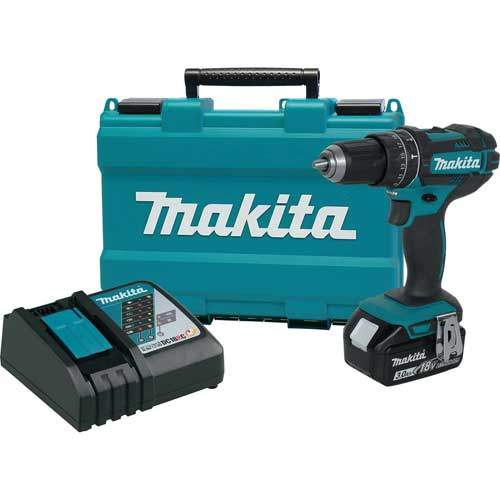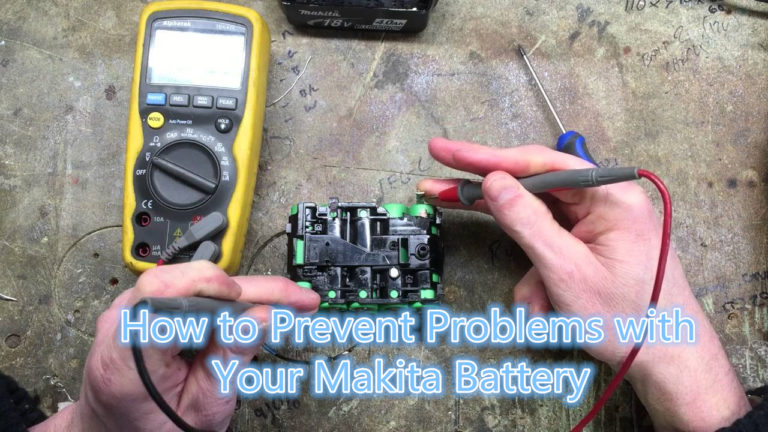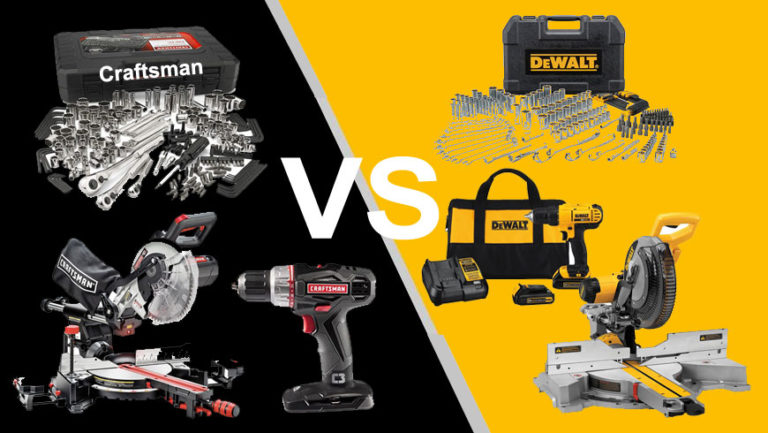Milwaukee and Makita are power tool giants, both starting out as electric tool repair businesses in 1924 and 1915, respectively, and later on expanding to become highly esteemed power tool innovators and manufacturers. But Makita Vs Milwaukee which one is the best? Here we will take a look at several aspects of the companies and their products, hopefully arriving at a fair conclusion in this tough comparison.
On the surface, Milwaukee is considered the superior brand, but, in turn, their products carry significantly heftier price tags than those of Makita. The question then becomes, is it the quality worthy of the price difference?
Makita Vs Milwaukee 2017
Before getting into the nitty-gritty of Makita Vs Milwaukee, let’s take a look at some of their new products from 2017.
Milwaukee released new M18 Cordless Tools, M12 Cordless Tools, One-Key equipped tools, hand tools, and masonry and power tool accessories, among others. Overall, these seem to be revamped, beefed up, more ergonomic, and, especially, longer lasting versions of previously successful models—they have definitely turned heads and seem promising for long-term use.
Makita have also shown innovation with newly introduced cordless brushless routers, cordless plunge saws, more compact and accurate miter saws with efficient dust extraction, and rotary hammers with reduced vibrations and better performance, and more.
Below we will take a more detailed look at various facets of the two companies, including warranty, ergonomics, battery, and price, followed by a comparison of a few specific products from the two power tool innovators.
Compare Quality and Warranty
Makita’s general product warranty is that of one year after the original purchase date, with a three-year limited warranty for their Pneumatic Nailer, Lithium-Ion Tool, and Battery and Charger. Their warranties have limitations based upon previous attempts at repairs by third parties and have a list of criteria that meet the general causes of wear and tear, as well as requiring that regular maintenance and care in handling the products has taken place. If satisfaction is not met within thirty days of purchasing a Makita product, the buyer is eligible for a refund or replacement, with the choice being at Makita’s disposal.
By contrast, Milwaukee’s warranties vary in accordance with the product, with time spans ranging from limited regarding the particular product’s details in accordance with specific models or other criteria, one-year limited unequivocally for any particular product, to lifetime limited, or extended lifetime guarantees.
Compare Reliability
In terms of reliability, countless reviews of Milwaukee are mixed, ranging from complaints regarding poor ergonomics resulting in discomfort with usage or delayed and poor service, to owners praising them as the best tools they have had to their disposal. Anecdotal evidence aside—especially as both extremes are to be expected in reviews of any product—the prevailing opinion tends to be positive.
Makita, while generally also gaining positive product reviews, have faced a class-action lawsuit regarding design flaws that resulted in a prevention of batteries charging, backed up by years of complaints that have not been taken into account. Detailed reviews attempting to dissect this problem have varied between claims of circuitry issues that could be circumvented by not letting the battery sit for long periods of time—in other words, proper maintenance and use as opposed to bad manufacturing—and claims that the charger is responsible based upon alternative power supplies working. This may be an isolated incident in the context of the entire Makita product range, which must be taken into account to fairly assess the general reliability of their products, but their lack of response to multiple complaints over a period of time is telling when it comes to the company’s ethos in terms of quality, service, and dependability.
Compare Ergonomics
Regarding ergonomics, as aforementioned, there was at least one complaint about Milwaukee, although it was specifically about a toolbox whose design resulted in discomfort in the arms and legs culminating over a short period of time. This is still not so damning, considering that the star products of these companies are, of course, the various power tools. So, let’s focus on the more interesting side of ergonomics. Milwaukee is known for functionality as well as the sheer number of cordless power tools they offer, resulting in a tidier worksite, increased freedom and maneuverability, and an overall more pleasant user experience. Milwaukee has been known to pay attention to functionality issues and improve upon their products, adding details or streamlining designs to increase comfort and tool performance.
Reviews of individual Makita products also reveal an attention to ergonomics, with efforts made to make designs compact and easy to use. Cordless drills, saws, and other tools have been given high ratings in the ergonomics department, often surpassing other aspects of their performance, such as speed and battery.
Compare Battery Compatibility and Life
Next, let’s look at battery compatibility and life. As was previously brought to the fore, Makita’s class-action lawsuit story already puts a dent into their conduct in the battery department, but it would be unfair to use it as a singular indicator of their overall effectiveness. Several of Makita’s newer batteries, such as the 18V Lithium-ion 6.0Ah, feature very short charging times—a result of the battery being kept cool, meaning it can be recharged without having to wait for it to cool down—ranging from 22 to 55 minutes in accordance with battery size. They are compatible with four different chargers, over 100 power tools, and have a few other noteworthy features, such as balanced charging as a result of the cells draining evenly, built-in memory chips recording the battery’s usage history, and a built-in CPU to analyze the battery’s condition. Perhaps Makita bounced back after the lawsuit, with reviews being favorable especially towards the short charging time.
Milwaukee, seemingly in-line with their tendency towards quality and longevity, focused the design of their Redlithium batteries on more power, a longer run time, and greater lifespan, with 20% more power and 50% more recharges than their counterparts, considerably increasing the time between replacements. They are suitable for use in temperatures as low as 0 Fahrenheit as well as use in hot temperatures, due to them being 20% cooler than their counterparts. They also feature Redlink Intelligence, an on-board electrical system designed to optimize tool performance, increasing communication between the battery and the motor. These batteries are compatible with Milwaukee’s M18 range.
Compare Price
Last but not least, in the greater Makita Vs Milwaukee picture, is price. As aforesaid, Milwaukee products tend to be more expensive than Makita products. The extent to which this is a worthy price difference to pay is wholly dependent upon the purposes of the user. Makita is certainly more than sufficient for most homeowners and DIY purposes; conversely, for professionals whose primary concern may be quality and especially longevity for frequent and extended use, Milwaukee is worth the price.
Maybe you will like to know:For a more robust analysis, below we’ll compare some of Milwaukee’s and Makita’s specific products.Makita Vs Milwaukee Cordless Drill

The Milwaukee 2606-22CT M18 Drill Driver CP Kit is sold online for $164.95. It weighs 9.3 pounds and is 13.6 x 14.8 x 4.7 inches in size. Included are two Lithium-ion batteries, features a built-in LED for better visibility in use, the Redlink Intelligence technology, an ergonomic sleeve for comfort and reduced slippage, and a multi-voltage charger with a 30-minute charge time.

The Makita XPH102 18V LXT Lithium-Ion Cordless Hammer Driver-Drill Kit (3.0Ah) is sold online for $119. It weighs 10.3 pounds and is 5.6 x 16.9 x 13 inches in size. It includes one Lithium-ion battery, features a variable two-speed design, and extreme protection technology for increased water and dust resistance.
Click to know more about
Top 5 Best Cordless Power Drill On The Market
Makita Vs Milwaukee Brushless Impact Driver
The Milwaukee 2753-20 M18 Fuel ¼ Hex Impact Driver sells online at $107.95. It weighs 2.6 pounds and is 3.5 x 8.2 x 5.8 inches in size. It includes star drive screwdrivers and requires one Lithium-ion battery, but it is not included.
The Makita XDT13Z Lithium-Ion Brushless Cordless Impact Driver is sold online for $68.25. It weighs 2.45 pounds and is 3.5 x 8.3 x 6.5 inches in size. It has variable speed for a wider range of applications, a brushless motor eliminating carbon brushes, decreasing temperature, and increasing longevity, and the motor is controlled electronically to optimize battery energy for longer use and increased efficiency. It requires one Lithium-ion battery that is not included.
Makita Vs Milwaukee Impact Wrench

The Milwaukee 2763-20 M18 Fuel High Torque Impact Wrench with Friction Ring is sold online at $249. It weighs 6.2 pounds and is 2.5 x 9.2 x 8.1 inches in size. It requires one Lithium-ion battery that is not included. It delivers up to 700 ft-lbs of maximum fastening torque and up to 1,100 ft-lbs of nut-busting torque. It features the Redlink Plus Intelligence, allowing the user to choose between two fastening modes, and a brushless motor. It requires one Lithium-ion battery that is not included.

The Makita XWT08Z LXT Lithium-Ion 18V Brushless Cordless High Torque Square Drive Impact Wrench sells online at $249. It weighs 8 pounds and is 10 x 10.3 x 3.9 inches in size. It delivers up to 740 ft-lbs maximum torque and 1,180 ft-lbs of breakaway torque. It features a three-speed power selection switch and an electronically controlled brushless motor for battery optimization and efficiency. It requires one Lithium-ion battery that is not included.
Click to know more about
Best Cordless Impact Wrench For Automotive
Makita Vs Milwaukee 18V Lithium-Ion Batteries

The Makita 18V LXT® Lithium-Ion 6.0Ah battery is sold online for $138.33. It reaches a full charge in 55 minutes, has twice the run time of its previous 3.0Ah battery, reaching 180 watt hours, and a compatibility with over 150 cordless Makita tools. The battery employs Star Protection Computer Controls—a communication technology engineered to perform real-time monitoring to protect against overheating, overloading, and over-discharging, increasing efficiency and longevity. It can perform in temperatures as low as -4 Fahrenheit as well as high temperatures by use of a cooling mechanism, and features an impact-resistant outer case and shock-absorbing inner-liner.

Milwaukee’s M18™ REDLITHIUM™ XC Extended Capacity battery, sold online for $99, utilizes 3.0 amp hours of runtime (converting to 54 watt hours at 18V). It is equipped with Milwaukee’s very own Redlink Intelligence, internally executing communication resulting in efficiency, protection, and optimization. It can perform in temperatures as low as 0 Fahrenheit, as well as high temperatures, and is compatible with over 40 Milwaukee M18 cordless power tools.
Conclusion
Despite the general prevailing opinions pointing to Milwaukee’s superiority in quality—which does, in many cases, seem to be true—Makita’s generally lower prices and oftentimes increased versatility makes them a worthy competitor. As is frequently the case, there is not a clear-cut winner in all ways, as priorities differ depending upon the nature of the project and the intended long-term use of the tool. It is also apparently worthwhile to compare products on a case-by-case basis. Overall, in the Makita Vs Milwaukee battle, Makita is the go-to manufacturer for price and versatility, whereas Milwaukee is guaranteed to deliver quality and longevity.





The pin clutch device from a 3/4″ drive influence wrench.